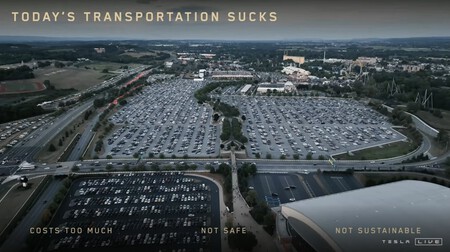In one presentation that lasted about half an hour and in the purest Tesla style. Elon Musk has made public, for the first time, the company’s long-awaited robotaxi, an electric vehicle without pedals, without a steering wheel and that will move completely autonomously so that the driver does not have to worry about anything.
But, above all, Musk has announced the most important thing of all: date and price. Will go into production in 2026 and will be priced below $30,000. If the plans are fulfilled, the CEO of Tesla has set an extremely short date to launch a vehicle on the market at a ridiculous price for what we expect from it.
Along with the Cybercab, which is the name of this completely autonomous vehicle, the Cybervan was also presented, a fully glazed bus with multiple seats facing each other to accommodate 20 people. In addition, the company’s robots became one of the great attractions for attendees, working as waiters or nightclub go-go dancers.
The biggest challenge in the history of Tesla (again)
It seems that Tesla is always immersed in the most and best, in the corkscrew with double pimples and exit from behind. The company refuses to act like a typical car manufacturer and is looking for new business avenues where it can once again lead. “We could sell cars without profit, making money with the software,” said Elon Musk in April 2023. And that is his great objective.
“Today’s mobility sucks,” they projected at the Tesla event during the presentation. Simple, short, simple and at the bottom message that they reinforced with equally simple, short, simple and at the bottom arguments: “it costs a lot.” “It’s not safe.” “It’s not sustainable.”



The images of huge American parking lots in big cities next to baseball stadiums, American football stadiums or airports were followed by transformations through renders where everything was clean and green because the cars disappeared.
These cars were actually taking a break to transport users home again. The idea is to offer a personal transportation service using completely autonomous vehicles at a ridiculous price. The objective is to achieve a price of 20 cents per mile. That is, about two dollars for every 16 kilometers.
To achieve this future, Tesla ensures that its Cybercab will go into production in 2026 and can be sold for less than 30,000 euros, since the cost will be minimal. With inductive charging, without steering wheels, without pedals and without sensors of any kind. Musk pointed out that all autonomous management of the vehicle will be carried out using cameras and artificial intelligence, a path that the company has already taken with its own cars.
Despite everything, there are many doubts that plague the production of this cabin with wheels. “Probably, well, I tend to be not very optimistic about the deadlines, but in 2026. Before 2027, let me put it that way,” Musk noted in the presentation about when he hopes to have approval to drive completely autonomously with his cars.
During it, the only thing that has been taught is that the Cybercab can move within a closed environment without problems but that type of environment has been controlled for vehicle manufacturers for a long time.


some cars, like BMW’s For five years now, they have allowed them to remember the last few meters before parking and leaving a parking lot on their own. Mercedes has long had an assistant so that the car can search for parking without the driver inside. And Xiaomi showed that its SU7 was capable of traveling across multiple floors of a high-rise parking lot until it found the expected space.
Closed environments are not the problem. Problems arise with real-time traffic and, above all, in the city. Once again, Mercedes has managed to allow its cars to circulate completely autonomously in the United States under very specific traffic circumstances (up to 60 km/h) and on specific spaces and roads. Tesla has not managed, at least for now, to treat them equally.

Waymo and Cruise have been working for years to offer a robotaxi service on the streets of cities like San Francisco but, in addition to burning billions of dollars, the service continues to encounter serious problems, causing the temporary withdrawal of the license from Cruise and companies such as Uber is already beginning to understand that they need alliances to make their investments profitable.
Despite everything, Elon Musk did not say anything about profitability, profit margins or other possible economic arguments that support one of the biggest bets in company history. At the moment, we have some ambiguous words about the arrival of the autonomous car and, if necessary, the door is open to throw the ball away and blame the regulatory entities.
It remains to be seen if Tesla fulfills its plans or, as has happened on multiple occasions such as the Tesla Cybertruck or the Roadster, they are delayed and become more expensive. As, in fact, is happening with this Cybercab, which Musk was already talking about being able to manufacture in 2023 for less than $25,000.
Photos | tesla
In Xataka | Tesla wanted its Autopilot to drive like a human. So I taught him to ignore some traffic signs


![[Img #74664]](https://thelatestnews.world/wp-content/uploads/2024/12/James-Watson-The-controversial-genius-behind-the-double-helix-150x150.jpg)








![[Img #74664]](https://thelatestnews.world/wp-content/uploads/2024/12/James-Watson-The-controversial-genius-behind-the-double-helix-300x200.jpg)


Add Comment